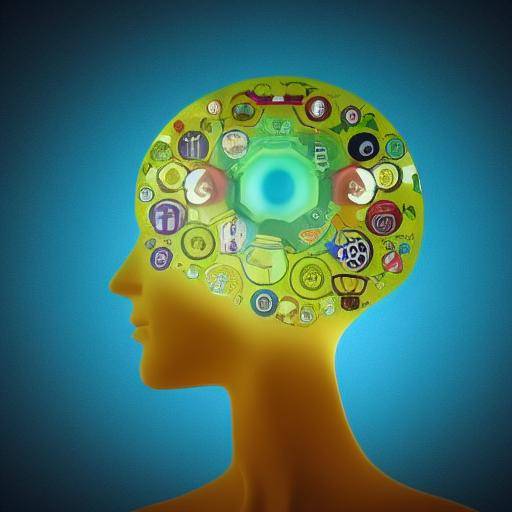
In the current digital era, it is easy to get lost in the world of technology. With the omnipresence of digital devices, it is essential to understand the importance of taking technological breaks to preserve our digital well-being and increase our productivity. In this article, we will explore in detail what technological breaks are, how they affect our digital well-being and why they are vital to improving productivity. We will also provide practical advice, in-depth analysis and expert opinions so that you can effectively incorporate these breaks into your daily life.
What are technological breaks?
Technological breaks involve disconnecting from all digital devices, such as smartphones, computers, tablets and other electronic devices. These breaks are fundamental to counteracting digital exhaustion and technological stress that may arise from overexposure to screens and constant connectivity.
Importance of digital welfare
Digital well-being refers to maintaining a healthy balance between the use of technology and the care of our physical and mental health. Technological rests are a vital tool to preserve this balance by allowing us to disconnect, relax, reduce stress and foster social interaction face to face.
Implications in productivity
The relationship between technological breaks and productivity is crucial. Studies have shown that taking time off technology helps to improve concentration, creativity and efficiency at work. In addition, it reduces mental fatigue and prevents constant distraction, leading to greater productivity in the long term.
History and background
Technological breaks are not a new concept. Since the dawn of the digital revolution, experts have recognized the need to set limits on the use of technology to preserve the balance between personal and professional life.
Evolution of technological breaks
Over the years, technological rests have evolved in response to changes in technology and people's needs. From the first recommendations of "disconnecting" electronic devices to current practices of setting specific timetables without technology, the concept has taken various forms in different cultures and contexts.
In-depth analysis
The benefits of taking technological breaks go beyond digital well-being and have a significant impact on productivity and performance. The simple act of temporarily disconnecting from technology can have transformative effects on our ability to face labor and personal challenges.
Positive effects on productivity
By taking time to disconnect, our brain has the opportunity to rest and recharge, leading to greater mental clarity and focus. This, in turn, allows us to address tasks with renewed energy and creativity, resulting in an increase in productivity and the quality of work done.
Comprehensive review
In addition to the obvious benefits in productivity, technological rests have a significant impact on mental health and general well-being. By disconnecting from constant digital stimulation, we allow our minds to rest, which reduces stress, anxiety and exhaustion, and helps us to stay focused and motivated in our daily responsibilities.
Best practices and approaches
Some common practices to implement technological breaks effectively include the creation of "tech-free zones" in the home or work, the establishment of time-specific limits for the use of digital devices and the participation in activities that do not depend on technology, such as outdoor exercises, reading or face-to-face social interaction.
Comparative analysis
It is crucial to understand that technological rests, digital well-being and productivity are intrinsically linked. To achieve optimal productivity and preserve digital health, it is vital to find a balance between these elements. By providing time to disconnect, we take care of our mental and physical health, which in turn allows us to make the most of our working environment.
Synergies between digital welfare and productivity
Digital well-being and productivity are closely related. By optimizing our well-being, we create the ideal conditions to achieve an optimal level of performance at work and other areas of our life. Technological breaks are a vital component to ensure this synergy.
Practical advice and useful recommendations
To effectively implement technological breaks, it is crucial to take into account some practical advice and useful recommendations. These strategies can help integrate technological breaks effectively into our daily routine, thus maximizing their impact on our digital well-being and productivity.
Strategies for integrating technological breaks
- Set time limits for using digital devices.
- Practice the "rule 20-20-20" to rest your sight: every 20 minutes, focus on something 20 feet away for 20 seconds.
- Schedule regular technological breaks during the working day.
- Participate in activities outside the screen, such as outdoor walks, physical exercise or leisure activities.
- Adopt the practice of meditation or mindfulness to disconnect and relax.
Conclusion
In short, technological breaks are a powerful tool to preserve digital well-being and increase productivity. By disconnecting us from technology on a regular basis, we allow our mind and body to recharge, which helps us to face our daily responsibilities with renewed energy and focus. By balancing the use of technology with the care of our health, we achieve greater efficiency and satisfaction in all areas of our life.
Frequently asked questions
Are technological breaks really effective to improve productivity?
Yes, various researches have shown that taking technological breaks contributes significantly to improving productivity by allowing the brain to rest and recharge, leading to a renewed approach and increased efficiency at work.
How long should I spend every day taking a technological break?
There is no strict rule on the exact duration of a technological break, but it is recommended to take small breaks every hour during the work and disconnect completely for at least an hour a day to allow a true disconnection.
How can I maintain discipline to take technological breaks?
Setting specific schedules for technological breaks, using reminders, and sharing this commitment with colleagues or family members can help maintain discipline. In addition, focusing on long-term benefits can be an additional motivation.
Can the implementation of technological breaks have an impact on labour culture?
Yes, the adoption of technological breaks can create a healthier working culture by fostering the balance between work and personal life, promoting the overall well-being of employees and increasing productivity in the workplace.
What are some alternatives to resting the mind during a technological break?
In addition to getting away from screens, activities such as meditation, physical exercise, reading or social interaction face to face are excellent alternatives to resting the mind and recharging energies.
Are there studies that support the effectiveness of technological breaks?
Yes, many scientific studies support the importance and benefits of taking technological rests, both for mental health and for labour productivity.
With these knowledge and strategies, you can effectively integrate technological breaks into your daily life, preserving your digital well-being and increasing your productivity. By prioritizing your digital health, you will face labor and personal challenges with a renewed approach and greater efficiency, thus achieving an optimal balance between the use of technology and your overall well-being.






















































